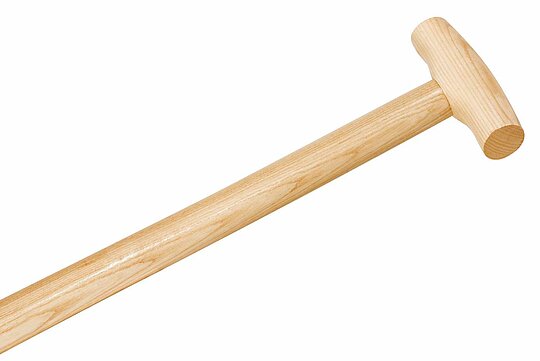The shaft is a very important element - in any garden tool! At the shaft, the tools are held securely and can be guided in a controlled manner. A good haptic and aoptimal shape ensure comfortable usage.The quality of a fork shaft is extremly important, as it hat to withstand a lot. Low-qulity shafts break more quickly and can thus lead to accidents/injuries.
The most important thing first:
- The shaft length depends on the intended use:
Long shafts for picking up material from the ground in an upright and back friendly position.
Shorter shafts for digging or transporting heavy material with optimized use of force. - The handle types have different features and are often chosen according to personal preferences.
- Most fork shafts are made of hard wood because of its excellent qualities.
Material used in the fork shafts:

Wooden shafts
- as a renewable raw material, wood is conserving resources and is CO2-neutral
- very confortable haptic
- absorbs hand perspiration
- enables a firm grip
Beech:
- very resilient
- shocks get absorbed
- raw material of German origin
- inexpensive raw material
- not as resilient and elastic as ash or hickory wood
Ash:
- very resilient and flexible
- hard impacts get absorbed
- inexpensive raw material
- relatively inexpensive raw material
Hickory:
- extremely tough and elastic
- up to 30% more resilient than ash wood
- hard impacts get absorbed
- raw material from North America/China
- expensive raw material
Shaft varnish:
- protection against contamination and moisture or fungal attack
- resistant to hand perspiration

















